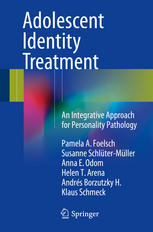

Most ebook files are in PDF format, so you can easily read them using various software such as Foxit Reader or directly on the Google Chrome browser.
Some ebook files are released by publishers in other formats such as .awz, .mobi, .epub, .fb2, etc. You may need to install specific software to read these formats on mobile/PC, such as Calibre.
Please read the tutorial at this link: https://ebookbell.com/faq
We offer FREE conversion to the popular formats you request; however, this may take some time. Therefore, right after payment, please email us, and we will try to provide the service as quickly as possible.
For some exceptional file formats or broken links (if any), please refrain from opening any disputes. Instead, email us first, and we will try to assist within a maximum of 6 hours.
EbookBell Team

5.0
20 reviewsAdolescent Identity Treatment: An Integrative Approach for Personality Pathology is a ground breaking title that provides general and specific clinical strategies to help adolescents who lack an integrated identity. The authors have developed a treatment based on the integration of object relations theory, family systems, attachment, developmental neurobiology and cognitive behavioral approaches that focuses on clearing blockages to normal identity development and adaptive functioning. While most adolescents build satisfying interpersonal relationships, are successful in school and work and begin romantic relationships, there is a minority of adolescents who do not succeed in this and are at a high risk of developing problems in school, work and relationships, problems with affect regulation as well as engaging in a wide range of self-destructive behaviors. In addition to a description of the disorder and assessment, this manual offers extensive clinical examples and concrete interventions, with phase-specific treatment components, including a clear treatment frame, psychoeducation, environmental interventions (with a "Home Plan" that addresses self-care behaviors, responsibilities and improved boundaries that fosters the development of better relationships between the adolescent and family) and parenting strategies, all in the service of creating a space for the individual work with the adolescent.